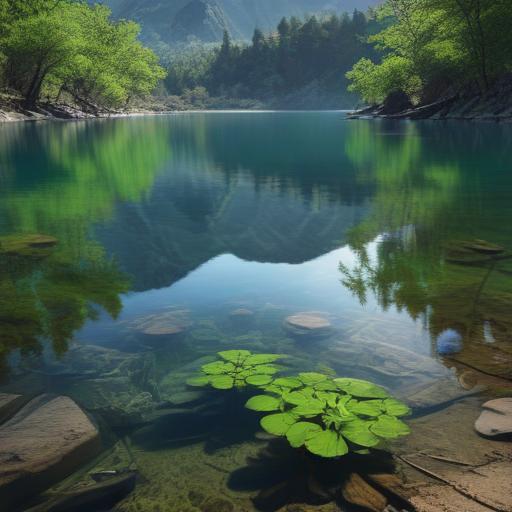In what seems like a plot straight out of a science fiction novel, certain remote regions in the U.S. are revealed to harbor remarkable lifeforms in radioactive lakes. Contrary to common expectations of barren wastelands created by nuclear contamination, researchers have discovered that these environments can support resilient organisms that thrive where most life would perish.
The narrative of these radioactive lakes traces back to the decades following World War II when the U.S. engaged in a nuclear arms race that left behind numerous contaminated sites, including lakes and reservoirs used for cooling reactors and storing radioactive waste. These locations have mostly been forgotten and monitored only by sensors over the years.
However, recent research led by a team from the University of Idaho has unveiled surprising findings. Using drones equipped with spectrometers, scientists observed signs of biomass in these seemingly inhospitable waters at night. After extensive analysis, it was revealed that photosynthetic microorganisms, resembling algae and similar in characteristics to radiotrophic fungi found in Chernobyl, were not just surviving but thriving in high levels of radiation. These organisms utilize melanin pigments to absorb and convert radiation into energy, functioning almost like biological solar panels.
This discovery holds enormous implications in various fields. In biotechnology, these lifeforms may be harnessed as natural sources for antioxidants, genetic repair models, or as blueprints for developing more effective vaccines. Interestingly, some organisms prioritize protein protection over DNA, which could lead to advancements in vaccine technology.
The findings are equally significant for astrobiology, sparking discussions about life beyond Earth. The resilience of these microorganisms raises questions about the potential for life on planets with harsh conditions, such as Mars, suggesting that understanding such organisms could provide insights into detecting and supporting life in extraterrestrial environments.
These revelations open up numerous inquiries: Did these organisms originate in these lakes, or did they come from more extreme habitats? Could other seemingly lifeless areas potentially house unknown ecosystems? Moreover, the ethical considerations surrounding the control and use of these unique organisms require careful contemplation.
This discovery demonstrates a striking counter-narrative to humanity’s tendency to damage the environment; it highlights nature’s remarkable ability to adapt and innovate in the face of adversity. Ultimately, the resilience of life in such extreme conditions is an inspiring reminder that nature often finds a way to flourish even in the most challenging circumstances. This insight could lead to more responsible approaches to environmental stewardship as we learn from these surprising adaptations.
